

No. 10 Worst Master's Degree For Jobs: Human Resources Management - In Photos: The Best And Worst Master's Degrees For Jobs. Human Resource Management (HRM) in the Global Perspective: Theory and Practice. Practice.

The paper defines human resource management, the theoretical basis of the discipline, business practice and global or international humanresource management. Thereafter, the paper concentrates on global perspective or issues in international human resource management practice. Human resource management is the strategic. What Is Human Resource Management? The Good Manager’s Personality. What Personality Types Do Best at Management? Uk.businessinsider. If you're interested in using Tieger's TeamWorks system for your own team, send an email to info@speedreadingpeople.com for a free demonstration.
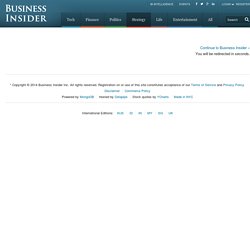
From Tieger: TeamWorks is a simple, elegant, and proven online tool which enables managers to engage, motivate and retain valuable employees, and helps teams — even virtual teams — collaborate most successfully for peak productivity. Benefits to the Organization: • Maximizes investment in leadership training and team building exercises • Helps managers know exactly how to motivate each individual employee • Enables team members to capitalize on their colleagues' competencies • Includes a Team Profile Analysis which identifies each team's Strengths, Potential Blind Spots and Proven Success Strategies: • Based on thirty years of research; developed by the world's leader in applying Personality Type to increase interpersonal communication effectiveness. Trevor Maynard The Value of Effective Marketing Integration. A. H. Maslow (1943) A Theory of Human Motivation. Classical Texts in Psychology (Return to Index) A Theory of Human Motivation A.
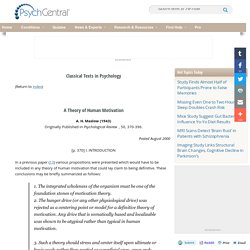
H. Maslow (1943) Originally Published in Psychological Review, 50, 370-396. Posted August 2000. McClelland's Human Motivation Theory - From MindTools.com. Discovering What Drives Members of Your Team Do you know what motivates team members?
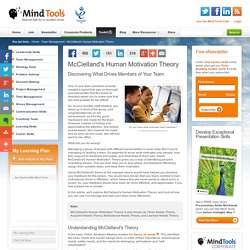
© iStockphoto/stevecoleccs One of your team members recently created a report that was so thorough and well-written that the board of directors asked you to make sure that she was praised for her efforts. So, at your monthly staff meeting, you stood up in front of the group, and congratulated her on her achievement, and for the good impression she made for the team.
A Comparison of five popular Organization Design Models. Six Key Elements in Organizational Design. Six Key Elements in Organizational Design Organizational design is engaged when managers develop or change an organization's structure.

Organizational Design is a process that involves decisions about the following six key elements: Five Approaches to Organizational Design. Managers must make choices about how to group people together to perform their work.
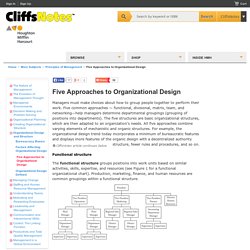
Five common approaches — functional, divisional, matrix, team, and networking—help managers determine departmental groupings (grouping of positions into departments). The five structures are basic organizational structures, which are then adapted to an organization's needs. All five approaches combine varying elements of mechanistic and organic structures. For example, the organizational design trend today incorporates a minimum of bureaucratic features and displays more features of the organic design with a decentralized authority structure, fewer rules and procedures, and so on.
Functional structure The functional structure groups positions into work units based on similar activities, skills, expertise, and resources (see Figure 1 As the simplest approach, a functional structure features well‐defined channels of communication and authority/responsibility relationships. Team structure. What is Organizational Design? Organizational design is a step-by-step methodology which identifies dysfunctional aspects of work flow, procedures, structures and systems, realigns them to fit current business realities/goals and then develops plans to implement the new changes.
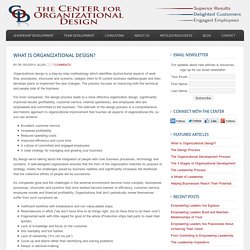
The process focuses on improving both the technical and people side of the business. For most companies, the design process leads to a more effective organization design, significantly improved results (profitability, customer service, internal operations), and employees who are empowered and committed to the business. The hallmark of the design process is a comprehensive and holistic approach to organizational improvement that touches all aspects of organizational life, so you can achieve: Excellent customer serviceIncreased profitabilityReduced operating costsImproved efficiency and cycle timeA culture of committed and engaged employeesA clear strategy for managing and growing your business.
21 types of fun - what's yours? Porter's Five Forces. The model of pure competition implies that risk-adjusted rates of return should be constant across firms and industries.
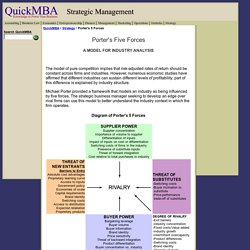
However, numerous economic studies have affirmed that different industries can sustain different levels of profitability; part of this difference is explained by industry structure. Michael Porter provided a framework that models an industry as being influenced by five forces. The strategic business manager seeking to develop an edge over rival firms can use this model to better understand the industry context in which the firm operates. I. Rivalry In the traditional economic model, competition among rival firms drives profits to zero. Economists measure rivalry by indicators of industry concentration. If rivalry among firms in an industry is low, the industry is considered to be disciplined.
Porter's Five Forces - Problem Solving Techniques from MindTools.com. Assessing the Balance of Power in a Business Situation Assess the balance of power in a business situation, with James Manktelow & Amy Carlson.
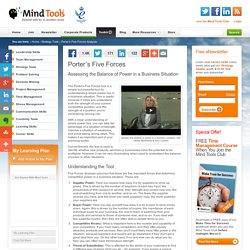
The Porter's Five Forces tool is a simple but powerful tool for understanding where power lies in a business situation. This is useful, because it helps you understand both the strength of your current competitive position, and the strength of a position you're considering moving into. 10 Most Successful Football Managers In History. Manager is the most important person behind the success of a club, your club can have a all star squad but if the manager is not experienced enough to deal with the big egos of superstars club can not see the best of them players.
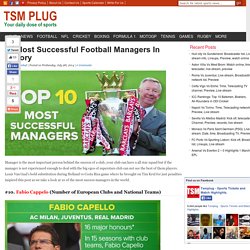
Louis Van Gaal’s bold substitution during Holland vs Costa Rica game where he brought on Tim Krul for just penalties inspired this post as we take a look at 10 of the most success managers in the world. #10. Frederick W. Taylor and Scientific Management: Efficiency or Dehumanization? Frederick Winslow Taylor is a controversial figure in management history. His innovations in industrial engineering, particularly in time and motion studies, paid off in dramatic improvements in productivity. At the same time, he has been credited with destroying the soul of work, of dehumanizing factories, making men into automatons.
What is Taylor's real legacy? I'm not sure that management historians will ever agree. But the following article is quite interesting, and Taylor's keystone book, The Principles of Scientific Management is now available from Engineering and Management Press, at phone numbers: +1.800.494.0460, or +1.770.449.0460. Management Theories & Concepts at the Workplace. CSUCI MGT307-05 Class Collection.